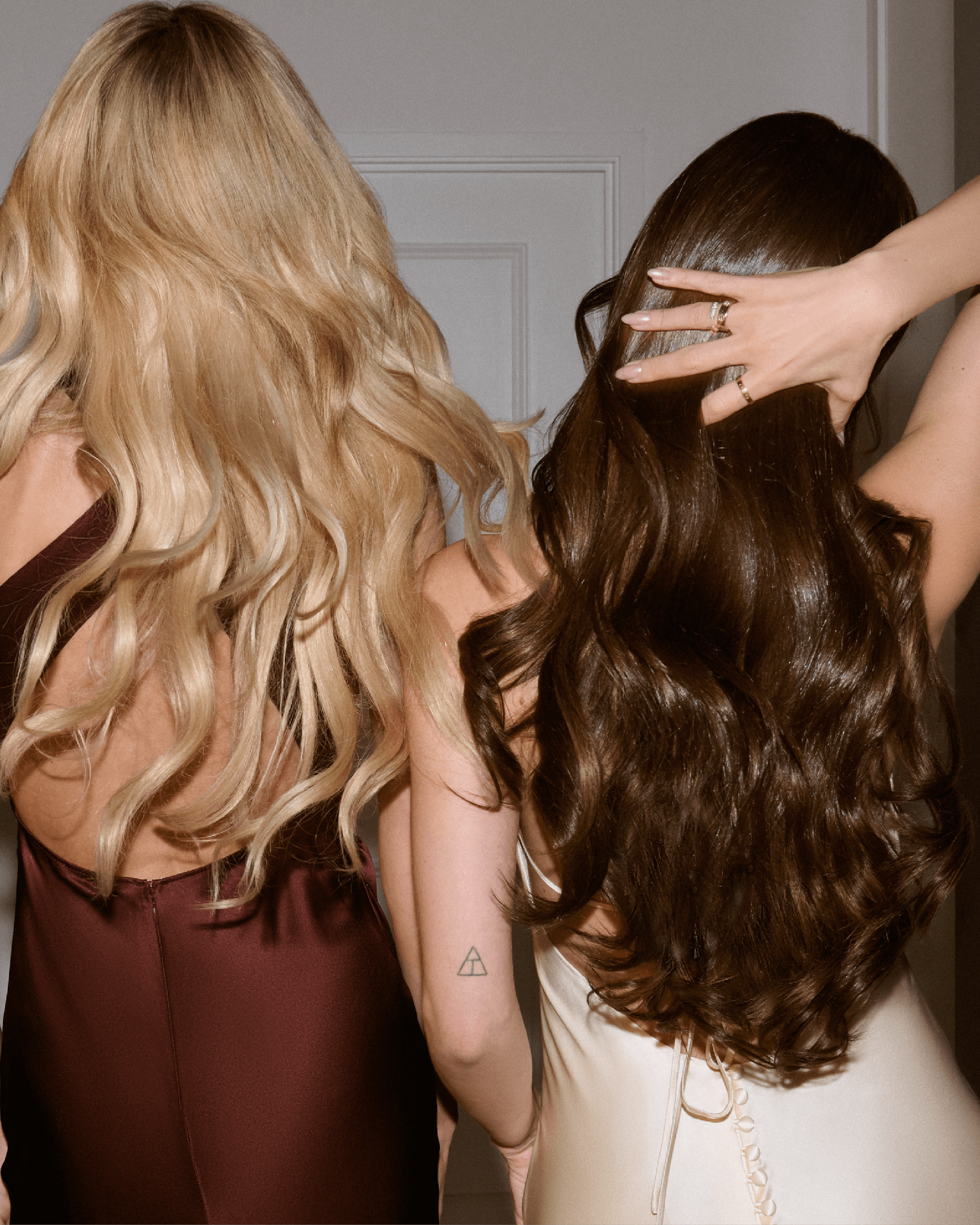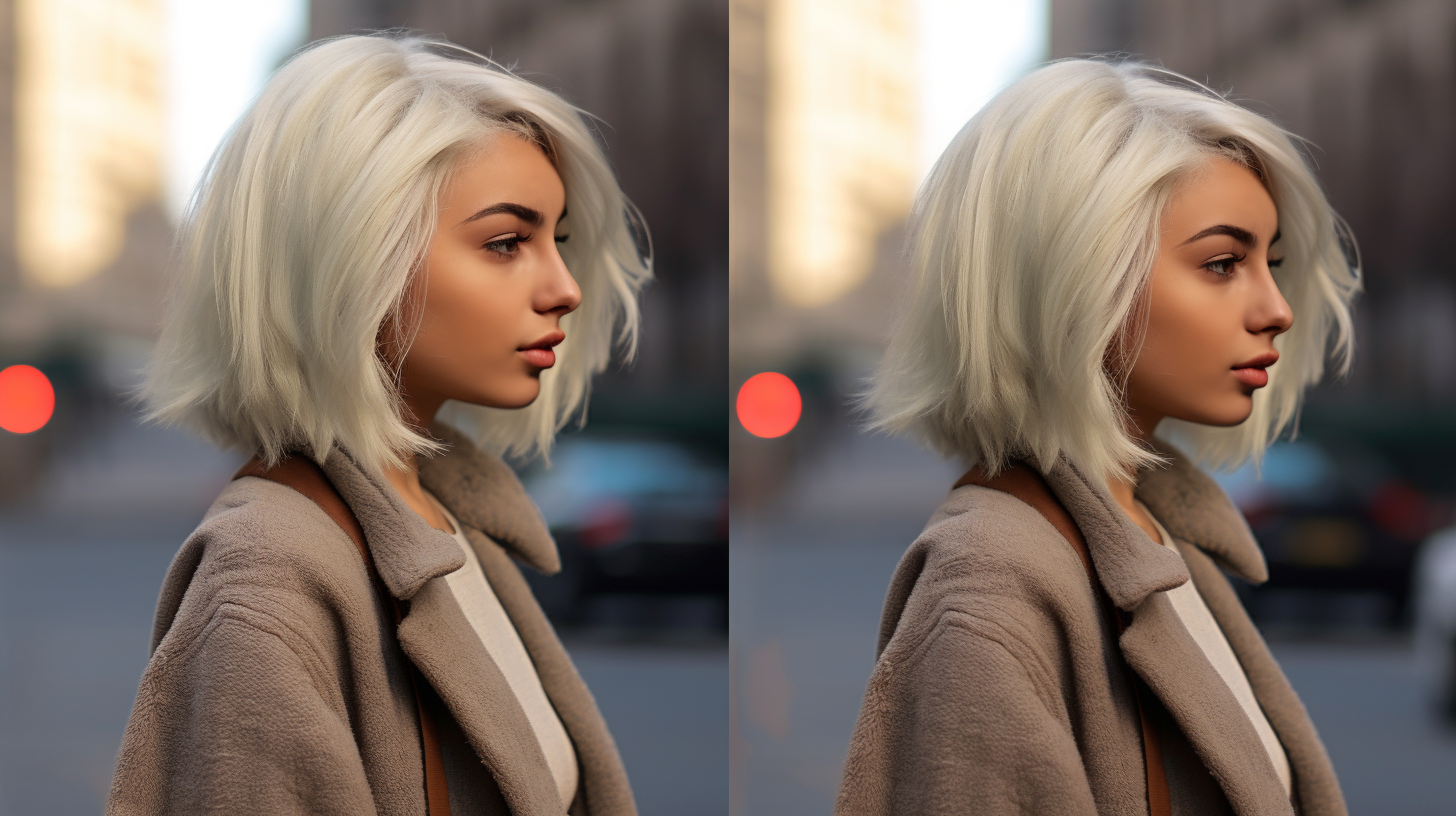In this article we'll dive into the world of bleach, to uncover how bleach damages your hair.
And let me set the record straight:
I know from personal experience how bleach can mess up your hair. And having learned the hard way, I decided to do the research, to really understand how bleach destroys our hair.
(Maybe this would encourage me to be more careful in the future?)
On that note, let's delve into the problems bleached hair poses in our lives and explore effective solutions to preserve your hair health.
Time to unravel the truth behind the question: Is bleach bad for your hair?
Why Does Bleach Damages Hair
The answer lies in the cuticle, the protective outer layer of your hair shaft. The cuticle comprises overlapping scales that shield your hair from harm.
When bleach comes into play, it forcefully opens up these scales, disrupting the natural pigments present in your hair. The problem is that this cycle continues.
The structural integrity of your hair also faces potential harm.
Beyond the cuticle lies the cortex, the inner layer of the hair shaft responsible for its strength and elasticity. The corrosive nature of bleach can damage the cortex, leading to an array of hair woes.
So eventually, your hair gets weaker and can break more easily, losing its natural bounce and energy.
READ NEXT: 10 Benefits Of A Leave-In Conditioner
The Signs of Bleach Damage
Let's look more closely at the warning signs that bleach damage has occurred to your hair. Recognizing these symptoms can help you address the issue and take steps toward restoring your hair's health.
Dryness:
Bleach mercilessly strips away your hair's natural oils, leaving it parched and brittle. The lack of moisture not only compromises your hair's appearance but also affects its overall health.
Brittleness:
Bleached hair is notorious for its brittle nature. It becomes fragile and prone to snapping, making it challenging to maintain the desired length and style.
Split Ends:
Split ends become a common occurrence in bleached hair. The damage inflicted by bleach weakens the hair shaft, resulting in the dreaded split ends that can hinder hair growth and require frequent trims.
Frizziness:
Bleached hair tends to become unruly and frizzy. The loss of natural proteins and moisture disrupts the hair's smoothness, leading to a frizzy and unmanageable appearance.
Loss of Elasticity:
Elasticity, a key characteristic of healthy hair, diminishes in the wake of bleach damage. As a result, your hair becomes less pliable and more resistant to styling efforts.
Color Fading:
The vibrant hues achieved through bleaching tend to fade faster than the natural shades of unbleached hair. This accelerated color loss can require frequent touch-ups and additional maintenance.
ALSO READ: 8 Hair Moisture Home Treatments To Try On A Budget
The Severity of Bleach Damage
How bad does bleach damage your hair? The extent of damage caused by bleach depends on various factors that must be considered before undergoing the bleaching process.
- Strength of Bleach: The potency of the bleach utilized directly correlates with the level of damage inflicted. Stronger bleach formulations are more likely to cause severe harm to your hair.
- Duration of Bleach Application: The longer bleach remains in contact with your hair, the deeper and more extensive the damage becomes. Time plays a crucial role in determining the harm caused by bleach.
- Initial Hair Condition: Pre-existing damage or fragility in your hair makes it more susceptible to harm from bleach. Before turning your hair into a blonde bombshell, make sure it's not already a ticking time bomb.
- Hair Type: Hair type also influences the impact of bleach. Fine hair tends to be more delicate and prone to damage than coarse hair when exposed to the corrosive effects of bleach.
CHECK THIS OUT: 10 Natural Ways To Hydrate Your Hair At Home
The Science Behind How Bleach Damages Your Hair
When you treat your hair with peroxide chemicals found in bleach, they penetrate deeply into the cortex, the innermost layer of the hair strand. However, their effects extend beyond their intended purpose of targeting melanin, the pigment responsible for hair color.
These peroxide chemicals inflict unintended harm throughout the entire hair structure due to the damage they cause to the outer protective layers, known as the cuticle. So, what happens when peroxide infiltrates the cuticle and cortex?
Basically, it makes your hair proteins oxidize through a process called oxidation. As a consequence, proteins are lost, and the severity of this protein loss directly corresponds to the degree of bleaching that occurs.
Why is bleach bad for your hair? In simpler terms, using peroxide chemicals on your hair not only affects its color but also compromises its overall structural integrity.
The peroxide penetrates deep within the hair, attacking the proteins and resulting in protein loss, which determines the extent of hair bleaching.
Discover the intriguing science behind the chemical and physical damage that bleach inflicts on our hair by delving into this enlightening study.
DIY HAIRCARE: 10 Scalp Health and Hair Growth Tips You Can Do at Home
Preserving Hair Health in the Face of Bleaching
Bleaching your hair may seem like a bright idea, but proceed with caution or you might end up with a bad hair day all year round. Take into account the following measures to lessen the harm that bleach causes and keep your hair healthy:
- Consult a Professional: Seek the expertise of a professional hair colorist who can assess your hair's condition and recommend the best approach for achieving your desired results while minimizing damage.
- Pre-Bleach Preparation: Prioritize nourishing your hair before the bleaching process by incorporating a deep conditioning routine. This can help strengthen the hair strands and enhance their ability to withstand potential damage.
- Post-Bleach Care: Implement a dedicated hair care regimen specifically tailored to address the needs of bleached hair. This may involve the use of moisturizing products, protein treatments, and regular trims to prevent further damage.
- Heat and Styling Precautions: Minimize heat styling and excessive manipulation, as bleached hair is more susceptible to damage from these factors. When styling, opt for heat protectants and gentle techniques to avoid exacerbating the vulnerability of your hair.
Does bleach damage your hair? Most definitely. But by being mindful of these strategies, you can enjoy the transformative effects of bleaching while preserving the health and vitality of your hair.
Achieving the stunning hair color you've been dreaming of through bleaching is undoubtedly tempting, but it comes at a cost.
Understanding the detrimental effects of bleach and taking proactive measures to minimize damage is crucial for maintaining the health and beauty of your hair.
Prioritize the well-being of your locks and consult a professional colorist to ensure a safe and successful bleaching experience. Remember, a healthy and vibrant mane will always be in style.
Want more to read? Try these trending topics:
- Dyeing Your Own Hair: Avoid Damage During the DIY
- 14 Pastel Hair Colors That Will Make You Consider Dying Your Hair
- How To Colour Your Hair At Home (And What To Watch Out For)






